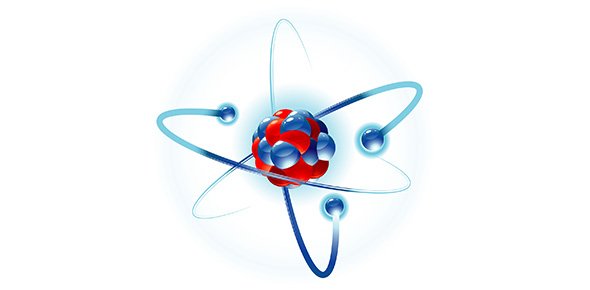Related Flashcards
Related Topics
Cards In This Set
| Front | Back |
|
1. All are correct statements about the reaction
catalyzed by citrate synthase EXCEPT:
a. citrate synthase is allosterically activated by ATP b. the complete chemical equation is: oxaloacetate + acetyl-CoA + H2O à citrate +CoA c. citryl-CoA is formed as an intermediate d. the mechanism involves attack of the carbanion of acetyl-CoA on the carbonyl carbon of oxaloacetate e. the enzyme uses general base catalysis to generate the reactive species |
A. citrate synthase is allosterically activated by ATP
|
|
2. alpha-ketoglutarate dehydrogenase is a
multi-enzyme complex analogous to:
a.pyruvate kinase b. glyceraldehyde-3-phosphate dehydrogenase c. isocitrate dehydrogenase d. pyruvate dehydrogenase e. lactate dehydrogenase |
D. pyruvate dehydrogenase
|
|
The only reaction of the citric acid cycle
that provides substrate-level phosphorylation is catalyzed by:
a. malate dehydrogenase b. citrate synthase c. isocitrate dehydrogenase d. succinyl-CoA synthetase e. nucleotide triphosphate kinase |
D. succinyl-CoA synthetase
|
|
The correct sequence of electron transport
in the succinate dehydrogenase reaction mechanism is:
A.
Coenyzme Q (UQ)
B.
[FAD]
C.
iron-sulfer clusters
D.
electron transport chain
|
B C A D
|
|
The oxidation of malate to OAA is not
thermodynamically favored under standard conditions. It occurs because:
a. it involves subtstrate-level phosphorylation b. it is coupled with a strong reduction c. it is coupled with ATP hydrolysis d. OAA is used in the next rxn, which as a negative delta G e. the previous rxn has a large negative delta G |
D. OAA is used in the next rxn, which as a negative delta G
|
|
The anaplerotic rxns associated with the TCA
cycle are a result of the:
a. use of many of the TCA cycle intermediates in biosynthesis b. oxidative nature of the TCA cycle c. decarboxylation rxns d. production of GTP and reduced coenzymes e. irreversible nature of some of the TCA cycle rxns |
A. use of many of the TCA cycle intermediates in biosynthesis
|
|
The 3 rxns of the citric acid cycle with
large negative delta G values include:
A.
citrate synthase
B.
Aconitase
C.
isocitrate dehydrogenase
D.
alpha-ketoglurate dehydrogenase
E.
succinyl-CoA synthetase
F.
succinyl-CoA dehydrogenase
G.
fumarase
H.
malate dehydrogenase
|
A, B, C
|
|
All are principal allosteric regulatory “signals”
controlling the TCA cycle activity EXCEPT:
a. acetyl-CoA b. NADH c. NAD+ d. ATP e. all are true |
E. all are true
|
|
It is crucial that regulation occur at
pyruvate dehydrogenase because:
a. pyruvate kinase is reversible b. lactate dehydrogenase is the only other enzyme to use pyruvate c. the product acetyl-CoA is commited to oxidation in the citric acid cycle or fatty acid biosynthesis d. alanine aminotransferase would use the pyruvate e. all of the above |
C. the product acetyl-CoA is commited to oxidation in the citric acid cycle or fatty acid biosynthesis
|
|
In mammalian tissues, isocitrate
dehydrogenase is allosterically stimulated by:
a. high NAD+/NADH and high ADP/ATP ratios b. low ADP/ATP and low NAD+/NADH c. high NAD+/NADH and low ADP/ATP d. low NAD+/NADH and high ADP/ATP e. none |
A. high NAD+/NADH and high ADP/ATP ratios
|
|
11. All of the following are inhibitors of
citrate synthase EXCEPT:
a. acetyl-CoA b. NADH c. succinyl-CoA d. ATP e. all |
A. acetyl-CoA
|
|
An essential feature of the glyoxylate
cycle, which is not associated with the TCA cycle is:
a. it utilizes condensation of acetyl-CoA with succinate b. it can produce a net synthesis of 4-carbon units, which are the TCA cycle intermediates, from acetyl-CoAs c. it occurs in chloroplasts d. mammals use the glyoxylate cycle for gluconeogenesis e. it is a reductive pathway |
A. it utilizes condensation of acetyl-CoA with succinate
|
|
All are true statements for the glyoxylate
pathways EXCEPT:
a. the glyoxylate pathway enzymes are found in the glyoxysomes b. although glyoxysomes are found in germinating seeds, they disappear after a plant begins photosynthesis c. glyoxysomes contain all of the enzymes for the glyoxylate cycle d. bypasses the oxidative-decarboxylation steps of the TCA cycle e. isocitrate is routed through isocitrate lyase and malate synthase |
C. glyoxysomes contain all of the enzymes for the glyoxylate cycle
|
|
14. Reduction involves the ____ of electrons,
and reactions for which the standard cell potential is ____ are spontaneous
under standard conditions.
a. loss; negative b. loss; positive c. gain; negative d. gain; positive e. none |
D. gain; positive
|
|
Each of the following is a true statement
EXCEPT:
a. standard free energy change for a redox reaction is related to the standard cell potential b. standard free energy change for a redox reaction is related to the number of electrons transferred c. for redox reactions with – standard cell potentials, standard free energy change is – d. redox rxns must occur in pairs where the total # of electrons involved in the oxidation = the total number involved in the reduction e. none are true |
C. for redox reactions with – standard cell potentials, standard free energy change is –
|





